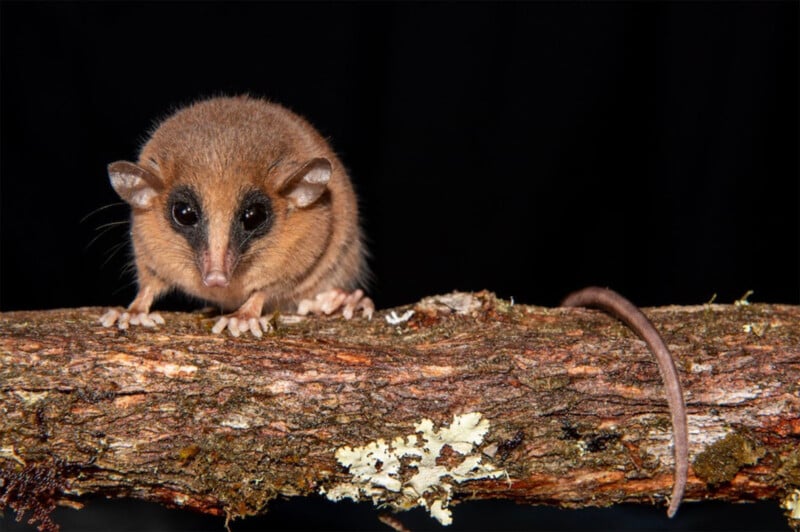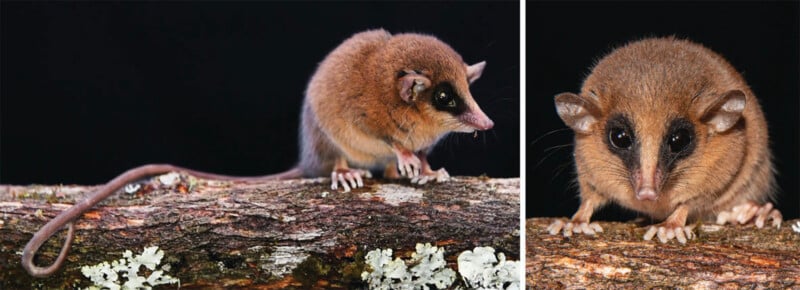Scientists Photograph Newly-Discovered Marsupial In Peruvian Cloud Forest

A team of researchers discovered and photographed a new species of marsupial while exploring the Abiseo River National Park, a UNESCO World Heritage site in the Peruvian Andes. The new little mammal is strange, tiny, and adorable, and only one specimen has been observed.
At the time of the discovery in 2018, the lead researcher, Silvia Pavan, a Cal Poly Humboldt Biological Sciences professor, was searching for a mysterious and still unnamed species of squirrel, per a statement from Cal Poly Humboldt. Instead of finding this squirrel, Pavan discovered a new species of opossum at an elevation of 2,664 meters on the eastern side of the Andes in San Martín department, Peru.
The new species, Marmosa chachapoya, named in honor of the indigenous Chachapoya people who lived in the region before Inca and later European colonization, is just about four inches long — 10 when counting its tail. The animal is closely related to Marmosa lepiada and M. anderson Pine, the researchers explain in their research paper, recently published in American Museum of Natural History. Silvia Pavan is the lead author, joined by Edson Abreu, Pamela Sánchez-Vendizú, and Robert Voss.
“I realized immediately that this was something unusual,” Pavan says of first seeing the new marsupial.
“We know very little about this species, including its natural history and distribution, and only one specimen has been collected so far,” she adds.

After the discovery and specimen collection, the researchers conducted extensive studies, including DNA analysis, to learn as much as possible. This process takes years, which is why the research from the discovery was only recently published, more than six years after the discovery. Beyond all the lab testing, it requires considerable research to cross-reference the specimen with others in museum collections worldwide, ensuring that another of the same species is not tucked away in a far-flung part of the globe.
Marmosa chachapoya is unique thanks to its DNA, of course, but also its fur coloration, pattern, and long, narrow snout. It also has distinct teeth and cranial structure, all of which are described in great detail in the research paper.
Pavan and the others discovered other new creatures during the expedition that have not yet been formally described, including a semi-aquatic rodent. That region of Parque Nacional del Río Abiseo is strongly protected and home to “remarkably high mammalian diversity.”

Researchers discovered 27 new animal species on an expedition in a different part of remote Peru earlier this year, including a shocking blob-headed fish, semi-aquatic mouse, a different marsupial, a dwarf squirrel, a salamander, a bat, and much more.
“It’s a reminder of the critical importance of scientific exploration and conservation in areas like Río Abiseo,” Pavan concludes of her and her team’s discoveries.
Image credits: Photos by Pedro Peloso. Research by Silvia Pavan, Edson Abreu, Pamela Sánchez-Vendizú, and Robert Voss.